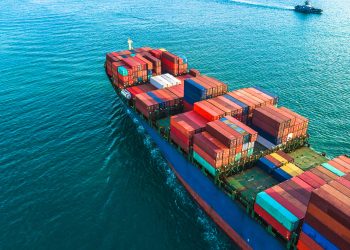As shipping is experiencing a boom in the container trade, in addition to the increasing demand, some freight forwarders and other parties are exploring unconventional methods to accomplish their targets.
As a result, Akshat Arora, Senior Surveyor, Standard Club, says that there are instances where shipowners are being asked to carry containers either on deck and/or inside holds on ships that are not designed for this purpose.
Such a carriage could lead to a number of safety related issues such as stack collapses or container losses overboard
Therefore, the crew on such vessels could be unfamiliar with the carriage of containers and may not have the capabilities or understanding to ensure safe carriage. For this reason, before any agreement, it is important to:
- Conduct a detailed suitability assessment to ensure that the containerised cargo can be safely loaded, carried and discharged from the vessel.
- Assess what modifications to the ship may be necessary, for example retrofitting of the deck fittings.
- Obtain consent from the ship’s Flag State and Classification Society (Class).
- Inform the club.
Operators should also be cautious regarding current charterparty obligations, as well as review the terms of any proposed charterparties.
Regarding to the former, the carriage of containers on bulkers may be excluded or deemed unsafe, in which case an owner may be entitled to call for fresh orders.
As far as new contracts are concerned, members should be aware that the usual dry bulk charters, like the NYPE forms, are unlikely to be suitable for the carriage of containerised cargo on vessels that are not specifically designed for that purpose.
For the safe carriage of containerised cargo, Mr. Arora are recommended to consider the following:
1. Structural strength of the load area
- Should be verified to be sufficient to withstand the load of the containerised cargo or whether any reinforcements are required.
- The weight should be evenly spread on deck so as not to exceed the maximum permissible loading weight per square meter.
- If/when dunnage is used, the arrangement and type of dunnage should be suitable to prevent any movement of containers; and the permissible load shall not exceed the deck load density for the specific ship.
2. Stowage and securing of cargo
- Planning should be done with due consideration to the stack height, weight, and dynamic lashing calculations.
- Particular attention would need to be given to the stowage location of dangerous goods (DG) and reefer containers. The location of DG containers will need to be in accordance with the International Maritime Dangerous Goods (IMDG) Code, while for reefers, there will need to be a provision of ensuring power supply.
- All the provisions of the IMO’s Cargo Stowage and Securing (CSS) Code as well as Class approved ship’s Cargo Securing Manual (CSM) should be followed. Ship-specific accelerations and calculation examples to securing are to be provided in the CSM.
- Only type approved securing equipment is to be used.
- Container lashings should be monitored and cross-checked by the ship’s staff after completion of the loading and during the voyage.
3. Ship’s stability and stress calculations
- Metacentric height (GM) should be within optimum range for vessel type. If the value of GM is very large, the vessel will be deemed stiff and there will be excessive forces acting on the cargo lashing. If the value of GM is small, the ship will have long rolling period with prolonged strain on cargo lashings.
- Intact GM limit curves shall be recalculated taking into account an additional wind profile area from deck cargo.
- Depending on ship’s freeboard, it may be necessary to re-address the damage stability calculations.
compliance with other statutory requirements like loadline regulations, IMO visibility criteria, etc.
4. Updating and reissuance of the certificates and documents
- Ship’s Class may require reclassification of the vessel and possibly other surveys to confirm that the ship is suitable for the carriage of containers.
- Procedures relating to the International Safety Management (ISM) code will need to be updated to ensure safe carriage of containers. Upon satisfactory review and verification by the Flag State (or Class, on behalf of the Flag State) company’s Document of Compliance (DOC) and ship’s Safety Management Certificate (SMC) will be reissued.
- Other documents and certificates like ship’s stability booklet, loading computer, cargo securing manual (CSM), Document of Compliance for Carriage of Dangerous Goods Certificate, will need to be amended and submitted to Class for re-approval.
5. Appoint a marine warranty surveyor
- To inspect the ship prior to loading, to ensure its suitability for the containerised cargo.
- To review the stowage and securing arrangements, stability data, lashing equipment, ship certificates and documents, and ensure that the risks associated with the specified operations are reduced to an acceptable level in accordance with best industry practice.






























































